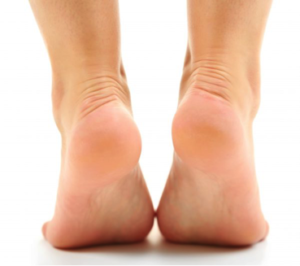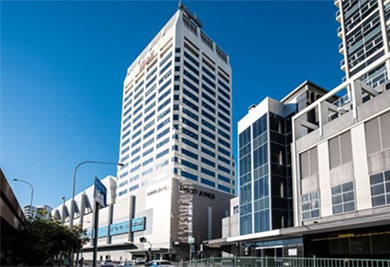Callus, Corns and Heel Fissures

Common to many athletes and everyday people are calluses (hyperkeratosis). Callus is the thickening of skin in response to pressure and is the body’s natural way of protecting sensitive areas of skin from repetitive trauma. Callus is usually a diffuse thickening of the skin, common on the heels and balls of the feet. Corns are more focused and are may be surrounded by or be underneath callus. Pressure areas develop due to footwear that is to tight, biomechanical factors, and in rare cases an underlying systemic disease.
The two most common types of corns are the soft and hard varieties. Hard corns most commonly appear on the bony prominences of toes and under bones of the foot. Soft corns appear between the toes and are kept soft by the moisture in this area. The sensations from a corn may resemble that of having a rock in your shoe and can be very painful if left untreated. Corns do not have a “root”; rather it is a hardened centre or nucleus, which needs to be removed for effective pain management.
Treatment for callus and corns involves daily self-care and regular debridement with a podiatrist. Offloading corns can be done with apertures (donut shaped dressing) and padding that redistribute pressures to the surrounding areas. Custom made orthotic devices with offloading and cushioning properties can minimise discomfort. The use of “corn-pads” is not recommended as an effective treatment as they can potentially cause further tissue damage.
Cracked heels involve the splitting (also known as fissuring) and cracking of the skin around the borders of your heels. This can be caused by the skin being dry or thickened with callus. When the skin becomes dry or thickened, it loses its strength and elasticity and therefore can split under pressure, causing painful and bleeding cracks.
There are several reasons callus and fissuring of the heels can occur. Some of these include the following:
- Walking barefooted
- Walking in open footwear such as thongs or sandals
- Standing up for long hours, especially on hard floors
- Dehydration
- Abnormal walking pattern (orthotics may reduce this)
- Diabetes
How do we treat heel fissures and calluses?
For thickened, callused heels, treatment from one of our podiatrists at PodiatryFirst is the quickest and most efficient treatment available. Using special instruments, we use a simple pain-free method of debriding the callused skin and any cracks!
For maintenance, after being treated appropriately by one of our expert podiatrists at PodiatryFirst, the following is recommended:
- Use a specific heel balm, two to three times daily
- A pumice stone can be used to maintain the reduced thickness
- Wear closed-in shoes and cotton socks where possible
- Keep hydrated, drink plenty of water
- If the heel crack has split and is bleeding, use a topical antiseptic twice daily until you can come for assessment and treatment
The quickest way to smooth heels is to visit your podiatrist at PodiatryFirst who can safely remove the dead skin leaving you with healthy and flauntable feet. They can also provide you with information on what sort of creams are best for your skin type as well as rule out more serious reasons as to why your skin might by dry and cracking.
Leave a reply



Most Commented